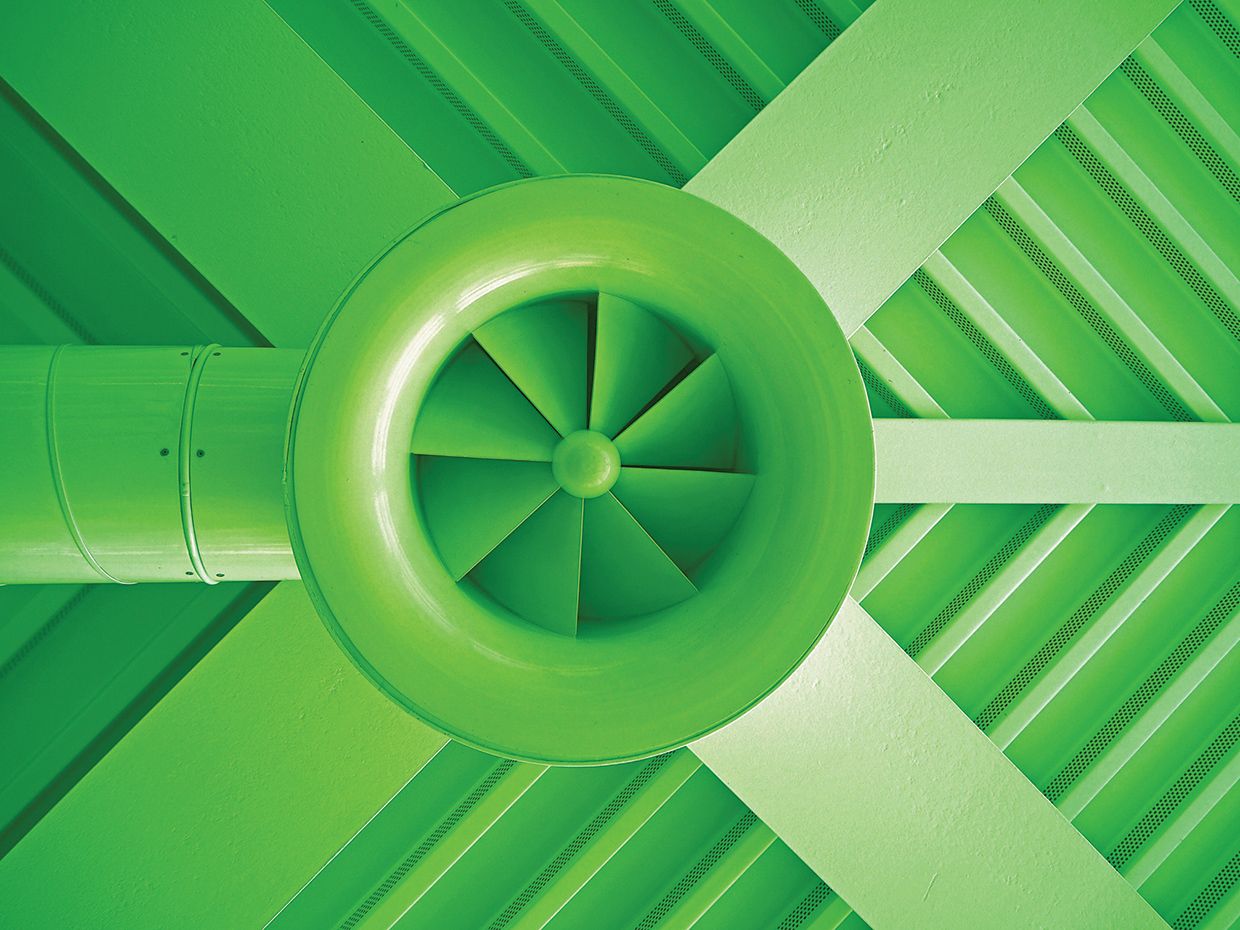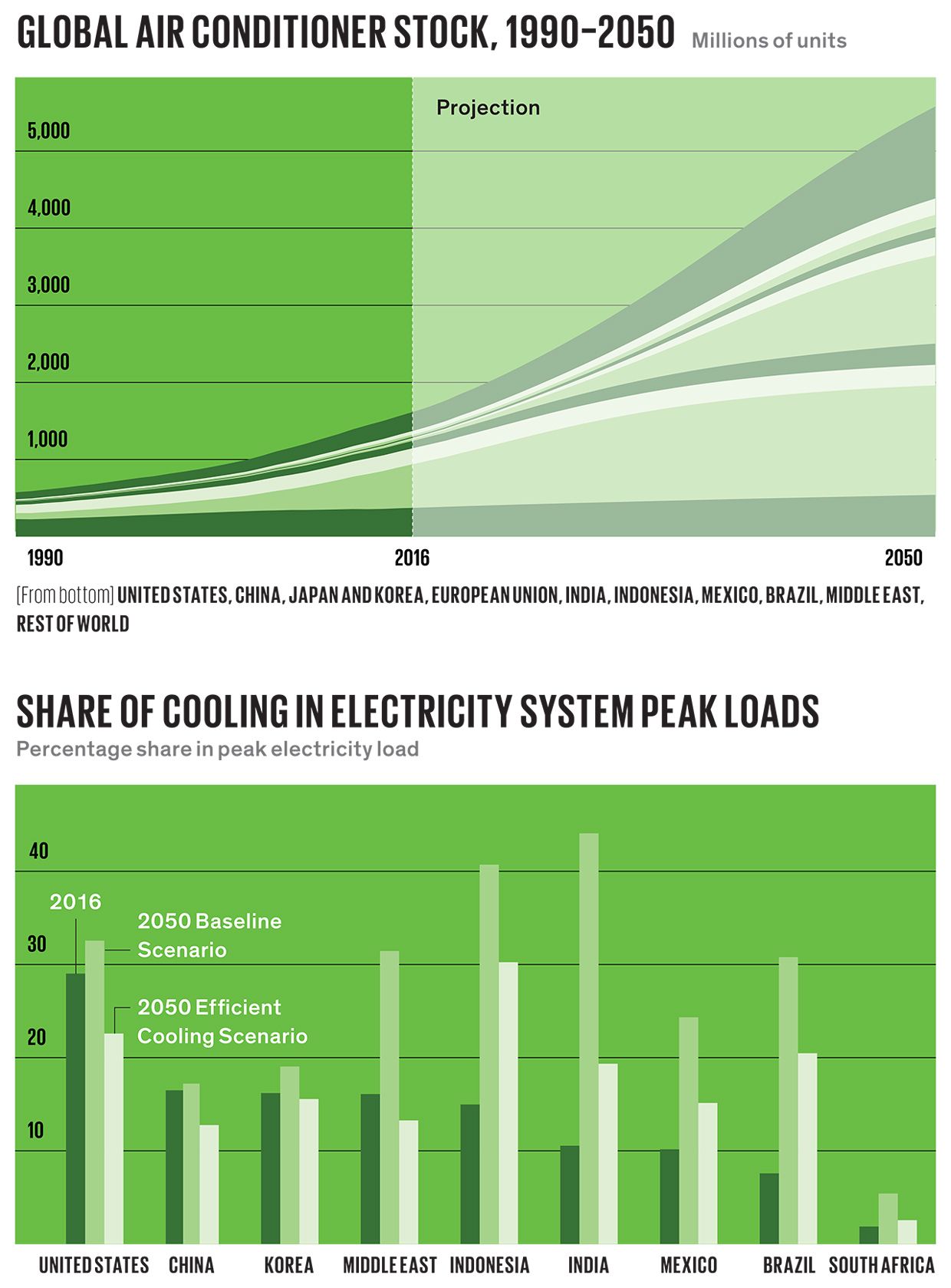Air Conditioning Wasn’t Invented to Provide Comfort to Human Beings
 Image: Nicolas Ayer/EyeEm/Getty Images
Image: Nicolas Ayer/EyeEm/Getty Images Air conditioning was devised not for comfort but for industry, specifically to control temperature and humidity in a color printing factory in Brooklyn. The process required feeding paper into the presses a number of times, once for each of the component colors, and the slightest misalignment caused by changes in humidity produced defective copies that had to be thrown away.
In 1902 the factory's operators asked Willis Haviland Carrier (1876-1950) to help, and he deployed coils [PDF] supplying 211 kilowatts of cooling to maintain a temperature of 27 C and a relative humidity of 55 percent. Half the cooling was furnished by cold well water, half from mechanical refrigeration based on evaporative cooling-the principle of which had been worked out in the 18th century by several scientists, notably Benjamin Franklin. The system was not a complete success, but Carrier continued his work, eventually publishing the first chart relating temperature, humidity, and the way people perceived these qualities-part of an engineering discipline now known as psychrometrics. In 1906, he obtained his first patent (U.S. Patent 808,897) for the Apparatus for Treating Air," and in 1911 he presented his paper, Rational Psychrometric Formulae," a lasting foundation for designing efficient air-conditioning systems.
At first, air conditioning was mainly used in the textile, printing, film, and food-processing industries. In the 1920s department stores and movie theaters began to offer it. In 1932 came a limited run of the first individual window units, a type that Philco-York brought to market in 1938-though nonessential A/C installations were temporarily banned during the war.
It took almost another three decades before half the households in the United States had A/C. By 1990, that rate reached 70 percent; now it exceeds 90 percent.
Large-scale migration from the Snowbelt to the Sunbelt drove the adoption, and afterwards household air conditioning began its northerly diffusion. Electricity-generating companies saw their peak production move from the winter months to the summer. Today, U.S. generation at utility-scale facilities is significantly higher in July than in January. In 2018 the difference was about 10 percent [PDF], and in 2019 it was 15 percent.
 Source: International Energy Agency Air conditioning stands to rise markedly in emerging economies, many of which have notably hot weather [top]. Cooling takes an ever-larger share of electric capacity, but more efficient air-conditioning units could make a big difference [bottom].
Source: International Energy Agency Air conditioning stands to rise markedly in emerging economies, many of which have notably hot weather [top]. Cooling takes an ever-larger share of electric capacity, but more efficient air-conditioning units could make a big difference [bottom]. By 2019 there were more than 1.6 billion units in operation around the world, more than half of them in China and the United States. But this was just the beginning: In 2018 the International Energy Agency predicted a coming cold crunch" driven by a combination of three key factors: Incomes will continue to rise in the emerging economies, where one of the first spending choices is for a window A/C unit. Global warming will gradually raise summer temperature peaks and increase the number of hot spells. Finally, populations will rise, with more than 90 percent of the increase taking place in the hotter places, such as Africa, the Middle East, and southern Asia.
There's a lot of growth potential here. Fewer than 10 percent of the nearly 3 billion people who live in the warmest places now have air conditioning in their homes, compared with 90 percent in the United States and Japan. If air conditioning were provided to the more than 200 million inhabitants of Uttar Pradesh, a single state in India whose average summer temperature is far higher than that in Florida, this would require at least twice as much electricity as the cooling demand in the United States, with its 330 million people. And because coal-fired generation provides a large share of the electricity in India, China, and Indonesia, the spread of air conditioning will greatly increase Asia's emissions of carbon dioxide.
Rising temperatures, rising incomes, and growing populations make the rapid growth of air conditioning unstoppable. All we can do is to moderate that growth rate by better urban planning, smarter building design, and enforcement of strict efficiency standards for new A/C units.
This article appears in the July 2020 print issue as The Year is 118 A.A.C. (After Air Conditioning)."